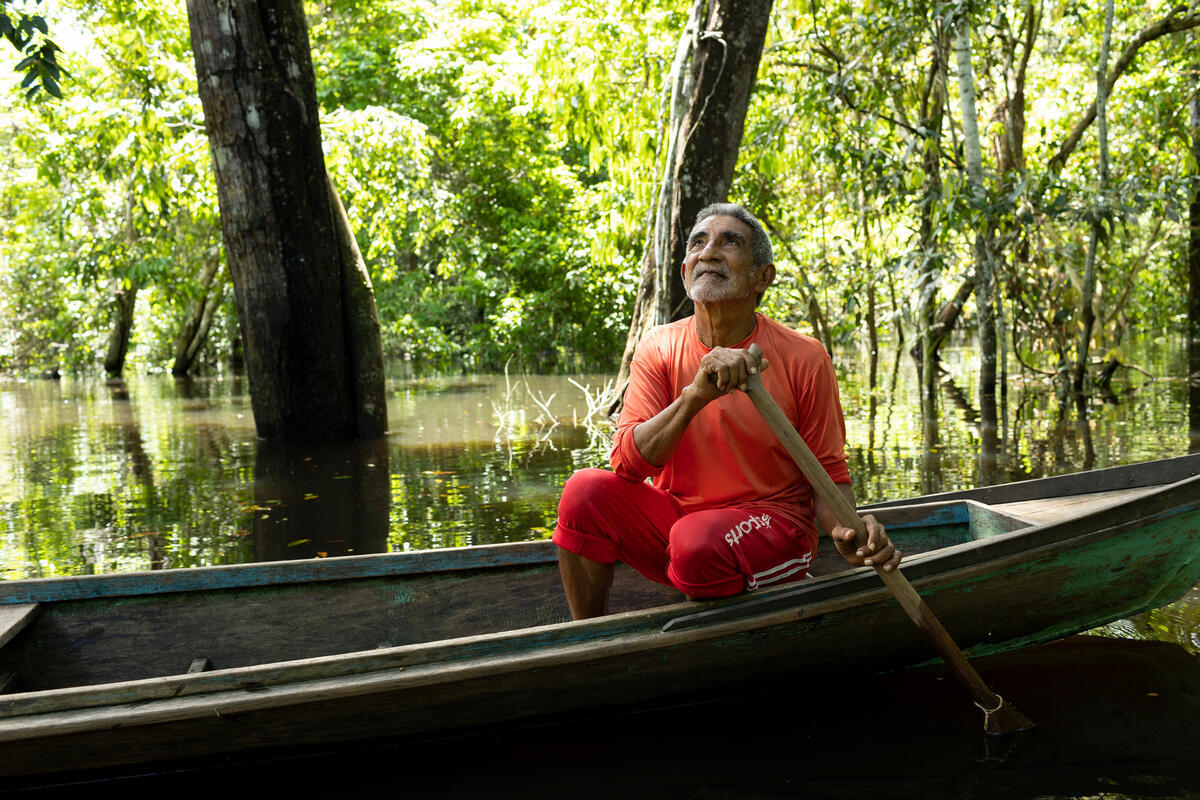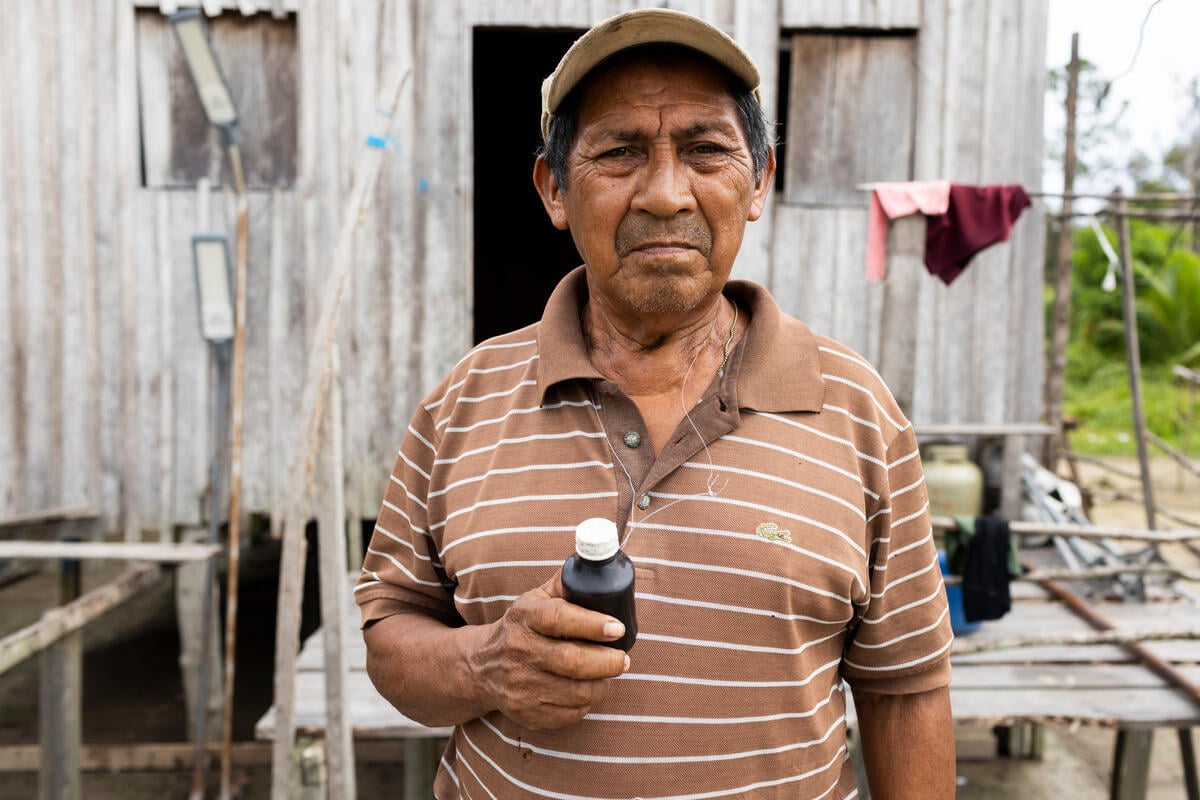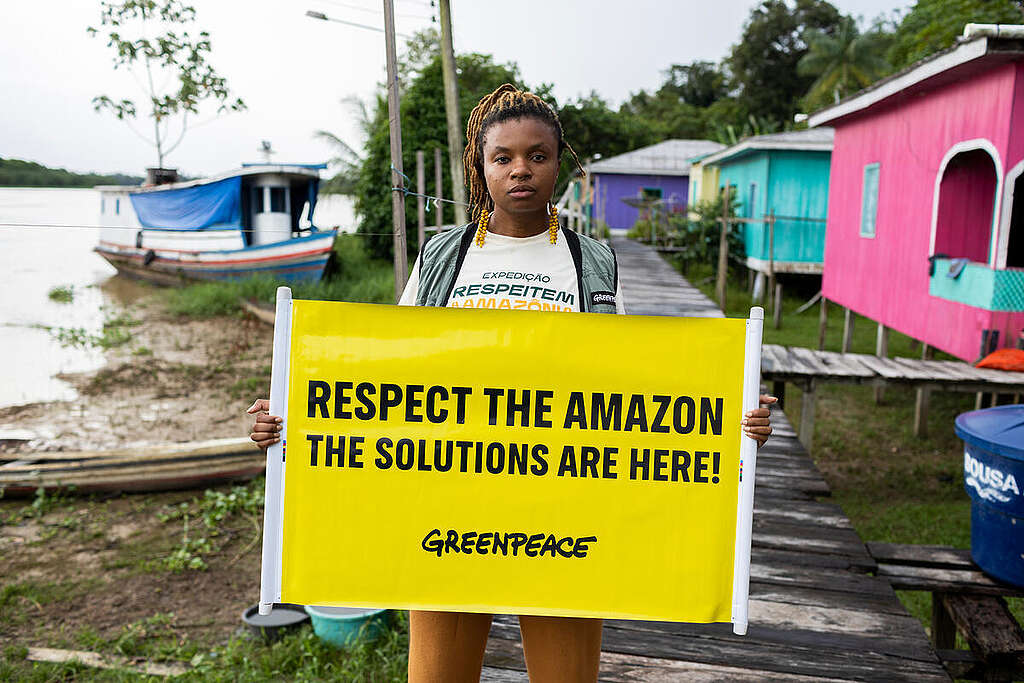Last May, Greenpeace Brazil returned to the ancestral waters of the Juruá River - the most curvy river in the world - to spotlight something the world urgently needs to see: real, proven forest solutions already thriving in the heart of the Amazon.
Twenty-five years ago, the Middle Juruá region, in the Brazilian state of Amazonas, was being devastated by deforestation. Today, it stands as a global example of sustainability, thanks to the strength, resistance, and organisation of Indigenous and riverside communities who protect and live with the forest.
These communities are not just protecting nature - they are implementing successful climate and biodiversity solutions, rooted in traditional knowledge and community governance. But to scale these solutions, they need direct and adequate funding, without red tape, and that reaches the ground.
"We want to echo to the world that solutions already exist in the Amazon and other tropical forests, but they need direct financial support that reaches the territories," says Rômulo Batista, Greenpeace Brazil's Forest Solutions campaigner. "COP30 will be a decisive moment to ensure this support actually reaches the people who care for the forest."
The Amazon's Forest Solutions in Action
Over nearly 20 days, Greenpeace Brazil visited 7 riverside communities and 4 Deni Indigenous villages. What we found were inspiring activities that simultaneously generate income and preserve the forest - true "forest solutions" in practice:
- seed collection from native trees like andiroba and murumuru
- sustainable extraction of rubber, açaí, honey, and copaiba oil
- community-based management of turtles and fish
- small-scale agroforestry and traditional cassava cultivation
These are time-honoured practices that integrate socio-biodiversity, social technologies, and ancestral knowledge - combining economy, culture, and conservation.
The oil extracted from seeds, for instance, is sustainably sourced by cosmetic companies. Rubber is traded to produce sneakers. Sustainable fishery and turtle management has increased populations of pirarucu and river turtles by 50 times in the last 15 years, restoring entire ecosystems.
But despite their success, these solutions lack the necessary financial incentives to improve local livelihoods and further strengthen forest protection - a crucial step in the global fight against climate change.
Nearly 2 Million Hectares Conserved - By the People
Chico Mendes once said about the Middle Juruá communities' struggle: "For the Juruá people, the protected land will be their greatest celebration - an answer to their cries. Like the song of the uirapuru, it will signal blessings and fortune."
That prophecy has come true. Today, the Middle Juruá is a mosaic of protected areas, legally recognised and community-managed - totaling almost 2 million hectares of conserved Amazon rainforest: The Médio Juruá Extractive Reserve, the Uacari Sustainable Development Reserve, and the Deni Indigenous Territory.
Together, this area is larger than Luxembourg and Jamaica combined - living proof that it's possible to thrive from a standing forest, with economic activities that respect nature and dignity.
From Exploitation to Autonomy
Until the 1990s, local and Indigenous communities endured near-slavery conditions under debt bondage systems. They were denied access to education, exploited for their labour, and watched their forest be plundered.
That changed when the people came together to form ASPROC (Association of Producers of Carauari), the region's largest grassroots organisation. Their unity, along with support from allies like the Base Education Movement (MEB), CIMI, OPAN, CNS, and the Instituto Juruá, laid the foundation for a transformation.
Today, the region is home to a growing network of community organisations, including:
- CODAEMJ: Sustainable Development and Solidarity Economy Cooperative of the Middle Juruá
- ASMANJ: Association of Women Agroextractivists
- AMARU: Residents' Association of the Uacari Reserve
- ASPODEX: Association of the Deni People of the Xeruã River
History of Resistance, Roots of Hope
Between 1999 and 2003, Greenpeace Brazil supported Middle Juruá communities in key moments of resistance: exposing illegal logging and deforestation, promoting non-polluting rubber production and assisting in the self-demarcation of Deni Indigenous lands.
More than 25 years later, we found a transformed reality: the seeds of resistance have grown into trees of hope. We even managed to meet up with some of the familiar faces who welcomed us on our first expeditions.
"If we can still see sumaúma and other centenary trees by the river today, it's because Greenpeace helped us fight deforestation and stop illegal logging," recalls Seu Basto, the first president of ASPROC.

"We spent 20 days making our way through the forest to demarcate our land. We went hungry, we were cold - everyone came back exhausted. And Greenpeace was there with us! They even brought us materials, like the markers we used to stake into the ground and outline our boundaries," recalls Bunarivi Vaka Deni, also known as Dr. Barros ("Doctor Clay" in English), one of the leaders and shamans of Nova Morada village.

The name "Dr. Barros" was given to him by doctors and anthropologists studying Deni medicine. He earned the nickname after astonishing visitors by treating all their ailments with earth clay - a testament to the ancestral knowledge rooted in the forest.
Forests Are Worth More Standing - It's Time to Fund the Guardians
Despite decades of progress, the communities of Middle Juruá still lack direct access to the funding they need to improve living conditions and scale their forest solutions. COP30 must be a turning point to channel real money to those truly protecting tropical forests - in the Amazon, Africa, and Asia.
Greenpeace advocates for robust, transparent, and inclusive financial mechanisms like the Tropical Forests Forever Facility (TFFF), which proposes payment per hectare of forest conserved. If well implemented, this model could address the chronic lack of investment and false solutions, like carbon offset markets, which mostly delay real climate action and do little to phase out fossil fuels.
The real solutions are already here - in the forest, and in the hands of its people.

Demand that world leaders fund those who truly protect our planet.
Sign the "Respect the Amazon" petition
Andressa Santa Cruz is a Communications Analyst at Greenpeace Brazil.






